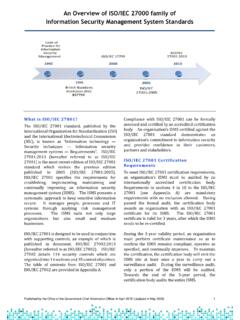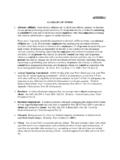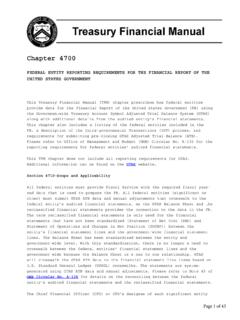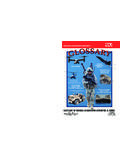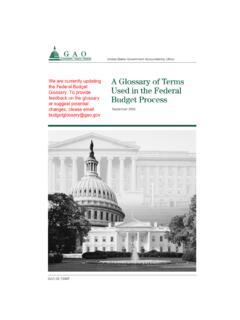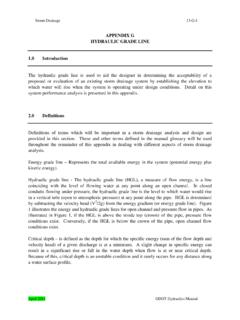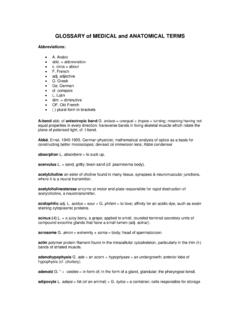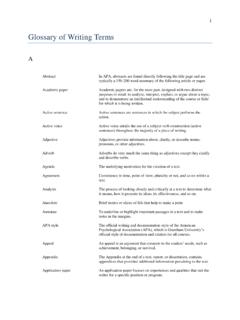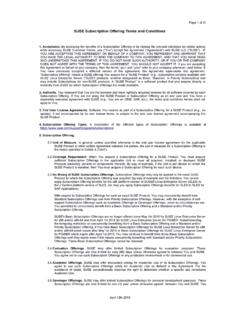Transcription of Appendix C - A Template of User Requirements Document …
1 BEST PRACTICES FOR BUSINESS ANALYST Appendix C A Template OF user Requirements Document WITH SAMPLE CONTENTS [G60c] Version: December 2016 The Government of the Hong Kong Special Administrative Region The contents of this Document remain the property of the Office of the Government Chief Information Officer, and may not be reproduced in whole or in part without the expressed permission of the Office of the Government Chief Information Officer. Best Practices for Business Analyst Appendix C Amendment History Amendment History Change Number Revision Description Pages Affected Rev.
2 Number Date Best Practices for Business Analyst Appendix C Overview OVERVIEW (a) A user requirement is what must be delivered to provide value to business when satisfied rather than how to deliver. A user Requirements Document (URD) describes what the proposed IT system looks like from a business perspective. It is important as it helps gain agreement with stakeholders and provides a foundation to IT project team on what the system needs to do to satisfy the business needs and user expectations, and provide input into the next phase of the development.
3 (b) A URD normally consists of the following information: i) Introduction, purpose of the URD, project background, business objectives, project scope and objectives, etc.; ii) Identified Risks, Assumptions and Constraints; iii) Proposed System Overview, high-level system diagram or description and system user profile; iv) Future Business Process; v) Functional Requirements define the functions or features of a system that can be utilised by a user to fulfil business operation ( what the system should do to provide business value when satisfied); vi) Non-Functional Requirements such as audit, control and security, global business rules, data Requirements , usability Requirements , service level targets, user volume and equipment Requirements , data growth and retention Requirements , etc.
4 Specify criteria of how the system can perform and maintain these functions and features ( how the system should work) from a business perspective; vii) Implementation Considerations such as implementation strategy, rollout and transition approach, data conversion, training approach, etc. viii) Appendices, Future Business Process Diagrams, Data Requirements , Reference Documents, glossary of terms , etc. (c) A sample Template of URD with sample content is provided below. B/Ds should adopt the sample Template flexibly and make changes as necessary to suit project needs. Best Practices for Business Analyst Appendix C Overview (d) Notes for using the Template are written in italic text enclosed in pointed brackets < > , while sample contents are written in bold italic and can be replaced by project-specific information or removed to suit specific project needs.
5 After all changes are made, all notes should be removed and font of all bold italic text should be changed to normal. Best Practices for Business Analyst Appendix C Overview HINTS AND TIPS (a) The Requirements should be accurate, clear, complete, verifiable, consistent, understandable and concise. (b) Technical solutions or elements ( data architecture, application architecture, system architecture, technical infrastructure, etc.) should be avoided. Such solutions are proposed by IT staff during system design. (c) Acceptance criteria define the boundaries for the functional Requirements and they should be written in a clear and concise manner.
6 (d) If Agile software development method is used, only high-level Requirements will be produced in the SA&D stage. Requirements should be written in layman s terms which are called user Stories . Please refer to the Practice Guide for Agile Software Development1 for more information about Agile. 1 Practice Guide for Agile Software Development can be found at With Sample Content user Requirements Document FOR INVENTORY MANAGEMENT SYSTEM OF DDD DEPARTMENT Version: MMM YYYY The Government of the Hong Kong Special Administrative Region The contents of this Document remain the property of and may not be reproduced in whole or in part without the express permission of the Government of the HKSAR.
7 With Sample Content user Requirements Document Project Identification Project Identification Project Name: Implementation of Inventory Management System for DDD Department Date: dd/mm/yyyy Project Owner: Mr. AAA Business Analyst: Mr. SEO Post/Rank: Head(ITMU) Post/Rank: SEO(Team)1 Revision History Revision No. Revision Date Pages/Sections Revised Remarks Revision no dd/mm/yyyy Revised pages and sections Distribution List Name Post/Rank B/D Date Mr. AA SSM(ITMU)1 DDD Department dd/mm/yyyy Mr. BB SM(ITMU)11 DDD Department dd/mm/yyyy Mr. CC SSO(SU)1 DDD Department dd/mm/yyyy Mr.
8 GG SM(ITMU)31 DDD Department dd/mm/yyyy Ms. FF EO(DIV)11 DDD Department dd/mm/yyyy .. With Sample Content user Requirements Document Table of Contents Table of Contents 1 1 Purpose .. 1 Project Background .. 1 Business Objectives .. 2 Project Scope .. 2 Project Objectives .. 3 2 IDENTIFIED RISKS, ASSUMPTIONS AND CONSTRAINTS .. 4 Identified Risks .. 4 Assumptions .. 5 Constraints .. 5 3 PROPOSED SYSTEM OVERVIEW .. 6 Description of Proposed Inventory Management System .. 6 System user Profile .. 7 4 FUTURE BUSINESS PROCESS .. 8 List of Future Business Process.
9 8 BP001-Creation of New Inventory 9 BP002-Update of Inventory Record .. 14 5 FUNCTIONAL Requirements .. 15 List of Functional Requirements .. 15 REQ-CRE-000 Creation of New Inventory Record .. 16 6 NON-FUNCTIONAL 19 List of Non-Functional Requirements .. 19 Audit, Control & Security Requirements .. 20 Global Business Rules Requirements .. 24 Data Requirements .. 25 Usability Requirements .. 28 Service Level Targets .. 29 Data Growth and Retention Requirements .. 31 Number of Users & IT Equipment Requirement .. 31 7 SYSTEM IMPLEMENTATION CONSIDERATION .. 33 Appendix .
10 34 With Sample Content user Requirements Document Introduction of URD 1 1 INTRODUCTION PURPOSE <This section describes the purpose of the Document .> This Document defines the user Requirements for the new computerised Inventory Management System (IMS) for DDD Department. The information stated in this Document will be used as the basis for subsequent development activities including design, implementation, testing and post-implementation review. PROJECT BACKGROUND <This section provides background information about the project to facilitate reader s understanding why the project is initiated and reasons for change.

